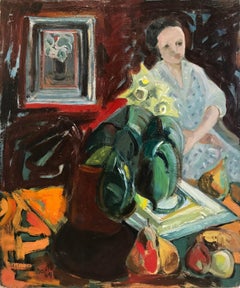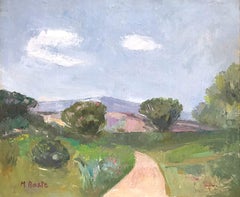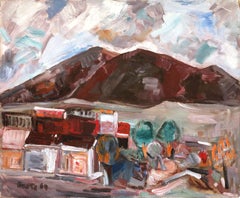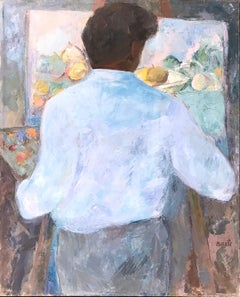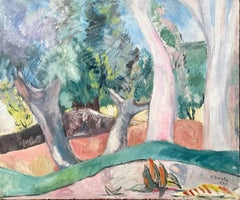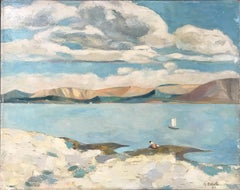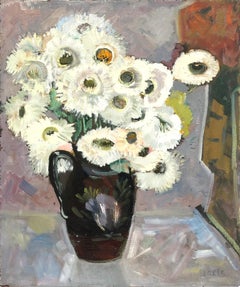Michael Baxte Art
Michael Baxte was an American painter. His work was part of the painting event in the art competition at the 1936 Summer Olympics. During the 1930s Baxte and his wife, Violet, lived in France and spent most of their time in Paris, where Baxte became part of the School of Paris and exhibited his artwork in government-sponsored exhibitions, including the Salon d'Automne, helping as well to organize an exhibition of American painters. When World War II began, and Paris became unsafe, Baxte and his wife relocated to Mexico, where they continued to live and work. Baxte died in 1972 in Mexico.
1960s Expressionist Michael Baxte Art
Oil, Masonite
Mid-20th Century Expressionist Michael Baxte Art
Oil, Masonite
1960s Expressionist Michael Baxte Art
Oil, Masonite
Mid-20th Century Expressionist Michael Baxte Art
Oil, Canvas
Mid-20th Century Expressionist Michael Baxte Art
Oil, Masonite
1960s Expressionist Michael Baxte Art
Oil, Masonite
1960s Expressionist Michael Baxte Art
Oil, Board
1960s Expressionist Michael Baxte Art
Oil, Masonite
1960s Expressionist Michael Baxte Art
Oil, Masonite
1950s Expressionist Michael Baxte Art
Oil, Masonite
1960s Expressionist Michael Baxte Art
Oil, Masonite
1970s Expressionist Michael Baxte Art
Oil, Masonite
1960s Expressionist Michael Baxte Art
Oil, Masonite
Mid-20th Century Expressionist Michael Baxte Art
Oil, Masonite
1960s Expressionist Michael Baxte Art
Oil, Masonite
1960s Expressionist Michael Baxte Art
Oil, Masonite
1890s Expressionist Michael Baxte Art
Canvas, Oil
2010s Expressionist Michael Baxte Art
Canvas, Oil, Cardboard
2010s Expressionist Michael Baxte Art
Canvas, Oil, Cardboard
1960s Expressionist Michael Baxte Art
Canvas, Oil
1970s Expressionist Michael Baxte Art
Canvas, Oil, Board
1920s Expressionist Michael Baxte Art
Gold Leaf
Late 20th Century Expressionist Michael Baxte Art
Masonite, Oil
2010s Expressionist Michael Baxte Art
Canvas, Oil
2010s Expressionist Michael Baxte Art
Canvas, Oil
1890s Expressionist Michael Baxte Art
Gold Leaf
2010s Expressionist Michael Baxte Art
Oil, Board
2010s Expressionist Michael Baxte Art
Gesso, Canvas, Wood, Oil, Acrylic
Mid-20th Century Modern Michael Baxte Art
Canvas, Oil
1960s Expressionist Michael Baxte Art
Oil, Masonite
Michael Baxte"Still Life with Flower Pot" Expressionistic Style Oil Painting on Masonite, Circa 1960
1930s Modern Michael Baxte Art
Oil, Board
1960s Modern Michael Baxte Art
Oil, Board
1960s Modern Michael Baxte Art
Oil, Board
